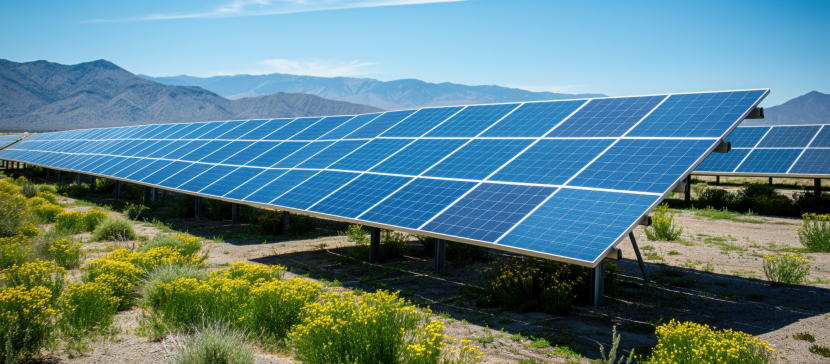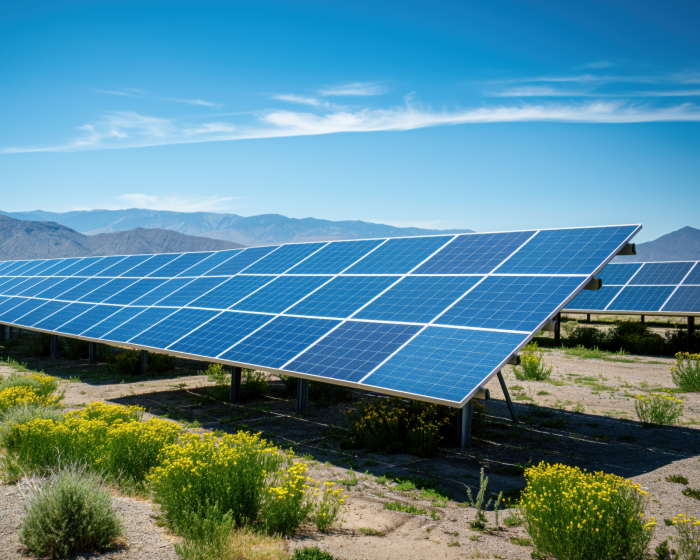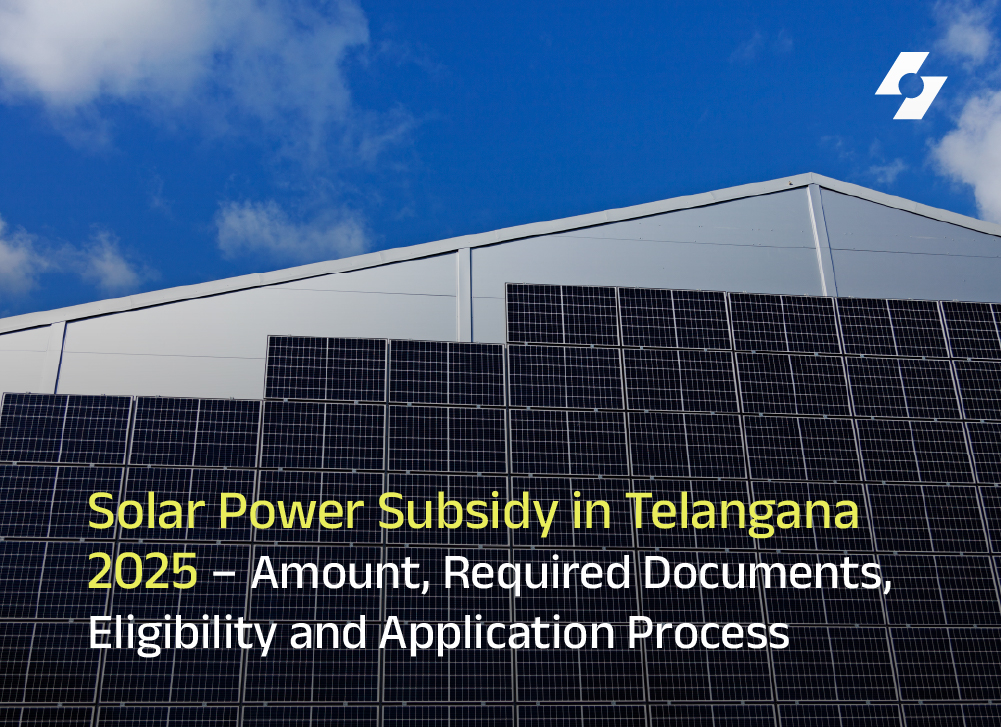Solar energy is one of the most convenient renewable energy sources. However, the initial cost of solar systems is not affordable for everyone. To make it affordable for everyone, the government provides solar subsidies for consumers.
The Gujarat Renewable Energy Policy 2023 is a major step towards achieving 50% renewable energy capacity by 2030. With an investment target of Rs. 5 lakh crores and utilization of 4,00,000 acres of land, the policy focuses on harnessing Gujarat’s vast potential of 36 GW solar and 143 GW wind capacity.
It promotes diverse projects like ground-mounted, rooftop, floating, and canal-top solar installations. Key benefits include no restrictions on capacity for captive use, energy banking on billing cycles, and exemptions from cross-subsidy surcharges.
The policy also supports solar subsidy in Gujarat. This makes renewable energy more affordable and accessible for consumers. It also ensures sustainability through competitive bidding by DISCOMs.
How Does Solar Subsidy Work?
The PM Surya Ghar Muft Bijli Yojana provides a subsidy to households for installing solar panels.
For a 1 kW solar system, this scheme provides a subsidy of Rs. 30,000, for a 2 kW system, you will get a Rs. 60,000 subsidy and from 3 kW onwards, you are eligible to get a subsidy of Rs. 78,000. This is the maximum amount you can avail of from this scheme.
To become eligible, first, you must be an Indian citizen. Your home should have an electricity connection from any of the MNRE-registered DISCOMs in your locality.
If you have already received any other solar subsidy, you are not eligible for this scheme. Your solar system’s capacity should match the sanction load/electricity requirements of your household.
For example, if your home needs 12-15 kWh (units) of electricity per day, you can install a 3 kW solar system. In that case, if you want to get a solar subsidy, you have to understand the 3 kW solar panel price in Gujarat with subsidy.
Gujarat Solar Power Policy
The Gujarat government introduced the ‘SURYA-Gujarat’ scheme in August 2019 to promote residential installations of solar rooftops in Gujarat. Recently, this Gujarat solar power policy was extended to align with the Solar Power Policy-2021, with a target of covering 7 lakh additional residential consumers by March 2025.
By March 2024, Gujarat had already achieved over 5.2 lakh installations of solar rooftop in Gujarat. This contributes significantly to India’s renewable energy targets. The initiative supports India’s commitment to reduce emissions intensity by 45% by 2030 and achieve net-zero emissions by 2070.
The scheme offers subsidies to encourage households to adopt solar energy, reducing electricity bills and contributing to renewable energy goals. The updates include:
1. Revised Provisions
The updated policy limits the scheme to household rooftop projects and includes systems registered under the 2015 policy, provided they meet the 2021 policy’s parameters.
2. Net Metering (What is Net Metering?)
Surplus solar power fed back into the grid is purchased by DISCOMs at Rs 2.25/unit for the first five years and subsequently at 75% of the average tariff from competitive bidding.
3. Eligibility
The scheme is exclusive to residential users and excludes industrial, commercial, or government entities.
What are the Advantages of Solar Subsidy in Gujarat?
The advantages of solar subsidy in Gujarat for residents make it an attractive option for shifting to renewable energy. The benefits are:
1. Reduced Installation Cost
Solar subsidies in Gujarat make installing solar panels much more affordable. This means homeowners do not have to spend as much money upfront to switch to solar energy. This makes it more accessible.
2. Long-Term Financial Savings
By using solar panels, you generate your electricity and reduce up to 95% of your monthly bills. These savings add up over time and make solar a smart financial choice, especially with rising electricity costs.
3. Environmental Impact
Switching to solar energy in Gujarat helps protect the environment by lowering carbon emissions and promoting cleaner energy sources. This supports India’s green energy goals and helps fight climate change for a healthier future.
4. Rural Electrification
Solar subsidies also play a crucial role in bringing electricity to remote villages and rural areas in Gujarat. This ensures that even those without reliable grid access can enjoy the benefits of electricity through sustainable means.
Gujarat Solar Policy and Potential for Industrial and Commercial Sector
The Gujarat Renewable Energy Policy 2023 is a progressive initiative that aims to boost renewable energy adoption in the industrial and commercial sectors.
The policy supports solar, wind, and wind-solar hybrid technologies. It has a target to achieve 50% of the state’s energy capacity from renewables by 2030.
- Wide Scope for Projects: Covers ground-mounted, rooftop, floating, and canal-top solar projects, as well as wind and hybrid projects.
- No Capacity Restrictions: Industrial and commercial users can set up RE projects without capacity limits relative to their contracted demand.
- Green Power Supply: Offers 100% renewable energy to consumers at tariffs determined by the Gujarat Electricity Regulatory Commission (GERC).
- Energy Banking: Allows energy banking on a billing cycle basis with applicable charges.
- Cost Benefits: Exempts captive power projects from cross-subsidy and additional surcharges. Moreover, there are no banking charges for residential solar use.
- Ease of Doing Business: A single web portal facilitates project approvals.
The policy anticipates investments of Rs 5 lakh crores and the utilization of 4 lakh acres of land. With Gujarat’s potential of 36 GW solar and 143 GW wind capacity, this policy is a significant step toward clean energy transition. It offers cost-effective solutions for industries and also promotes sustainability.
Application Process for Solar Subsidy in Gujarat
The step-by-step application process for solar subsidy in Gujarat is:
Step 1: You need to visit the official website of PM Surya Ghar Scheme.
Step 2: Then you have to provide certain details for registration. They are as follows:
- Choose your Electricity Distribution Company
- Submit your Electricity Consumer Number
- You must diligently follow directions from the portal.
Step 3: You need to log in with your Consumer Number and Mobile Number.
Step 4: Apply for the Rooftop Solar as per the form.
Step 5: Fill out the online application form.
Step 6: DISCOM will approve your feasibility. Once the approval process is complete, a DISCOM-registered vendor installs the plant.
Step 7: After installation, you must submit the plant details. Following this you can apply for a net meter.
Step 8: After the net meter installation, the DISCOM will do an inspection, and they will provide a commissioning certificate on the portal.
Step 9: Once you receive the certificate you have to submit a cancelled cheque and your bank account details through the portal.
Step 10: Within 30 days you will receive your subsidy in your bank account.
Documents Required for Applying for Solar Subsidy in Gujarat
The documents required for applying for solar subsidy in Gujarat are:
1. Proof of identity.
2. Proof of address.
3. Roof ownership certificate.
4. Electricity bill.
Solar Panel Price List in Gujarat with Subsidy
Below is a combined table of the capacity of the solar system and subsidies in Gujarat:
|
Capacity of Solar System
|
Installation Cost Without Subsidy (Rs)
|
PM Surya Ghar Subsidy
|
Installation Cost With Subsidy (Rs) |
|
1 kW
|
90,000 – 1,30,000
|
Rs 30,000
|
60,000 – 1,00,000
|
|
2 kW
|
1,40,000 – 1,80,000
|
Rs 60,000
|
80,000 – 1,20,000
|
|
3 kW
|
1,90,000 – 2,30,000
|
Rs 78,000
|
1,12,000 – 1,52,000
|
|
5 kW
|
2,90,000 – 3,30,000
|
Rs 78,000 |
2,12,000 – 2,52,000 |
|
10 kW
|
5,40,000 – 5,80,000
|
Rs 78,000 |
4,62,000 – 5,02,000 |
Conclusion
Solar subsidy in Gujarat offers significant financial incentives for residential solar installations in 2025. This subsidy aims to promote clean energy adoption and reduce installation costs. The state’s policies and PM Surya Ghar Scheme have positioned Gujarat as a leader in India’s solar energy sector, fostering a sustainable future and encouraging widespread solar adoption.




